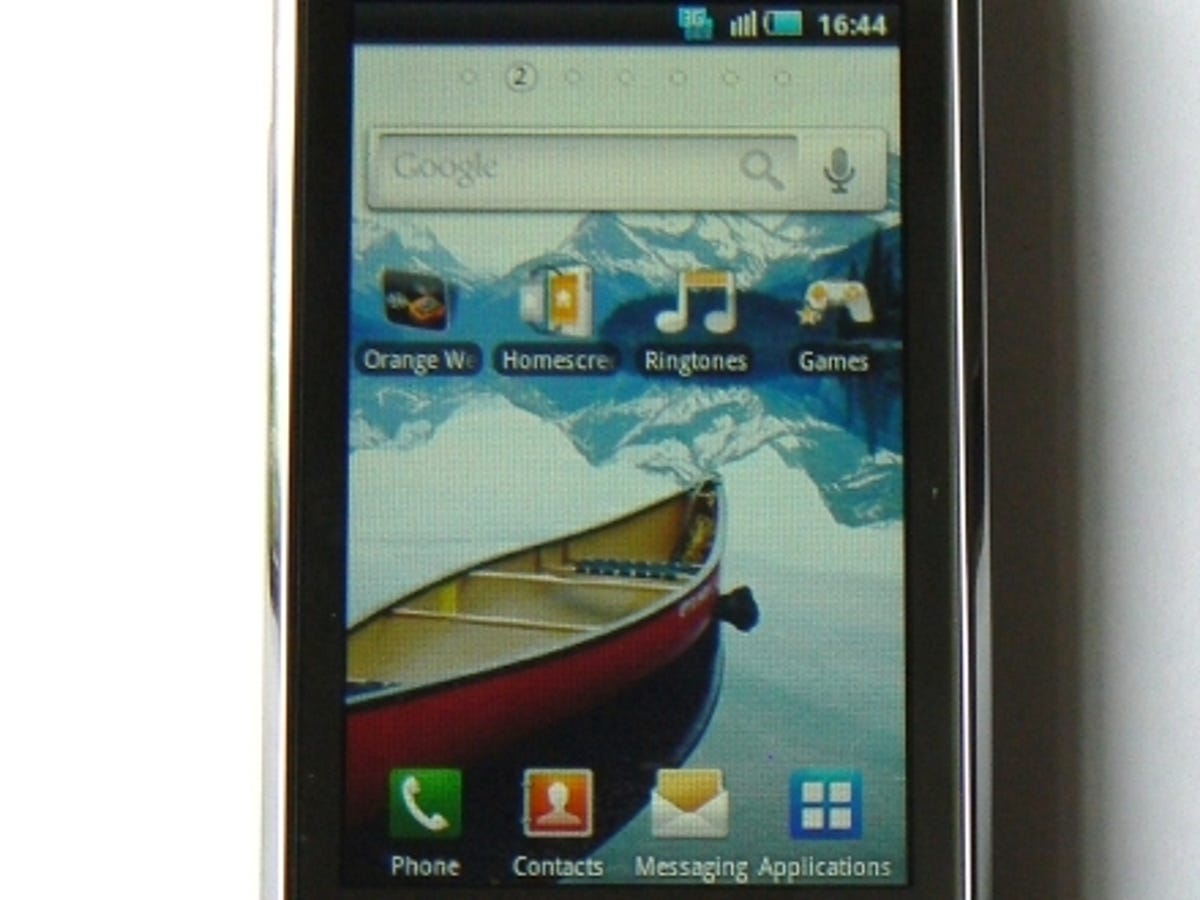 Why You Can Trust CNET
Why You Can Trust CNET Samsung Galaxy Apollo GT-i5801 review: Samsung Galaxy Apollo GT-i5801
If you can't afford a high-end Android smart phone, the cheaper Galaxy Apollo GT-i5801 is definitely worth a perusal instead. It runs version 2.1 of Android, offers a responsive capacitive touchscreen, and trumps most of the competition when it comes to battery life. Consider us impressed
The Samsung Galaxy S is one of the best smart phones you can currently buy. But its high price means many people simply won't be able to afford it. This is where the Galaxy Apollo GT-i5801 fits in. It offers many of the best features of the Galaxy S, including version 2.1 of the Android operating system, in a much cheaper handset.
The Good
The Bad
The Bottom Line
You can pick the Apollo up for free on a £20-per-month, 2-year contract. It's also available on a pay as you go deal for around £150, or for about £225 SIM-free.
Chunky charm
The Apollo doesn't look as classy as some of Samsung's other recent smart phones, but it's not without its charms. It's rather chunky, at 13mm thick, and the rear of the phone is basically a single piece of dull, black plastic. But the front has a much sexier, mirrored finish that really looks the business, even though it's a magnet for fingerprints.
Beneath the screen, you'll find a triangular home button flanked by touch-sensitive buttons for the menu and back functions. The top of the handset is home to a micro-USB port hidden behind a plastic flap, a standard headphone jack, and a power button that doubles as a lock switch. On the right-hand side, there's a volume rocker, but the Apollo doesn't have a dedicated camera button.
Treat your fingers
Thankfully, Samsung hasn't used a resistive touchscreen on the Apollo. Instead, the phone has a capacitive touchscreen that supports multi-touch, so you can pinch your fingers together to zoom into Web pages, maps and pictures. The sensitive screen also makes it a breeze to enter text using the virtual keyboard. That said, the 81mm (3.2-inch) display is on the small side, and, although its resolution of 400x200 pixels isn't bad, text and graphics don't look as sharp as they do on high-end handsets.

The phone runs on a processor that ticks over at 667MHz. The handset generally feels nippy but, if you've got plenty of widgets open on the home screen, some sluggishness is occasionally noticeable. The Apollo definitely isn't as quick as higher-end handsets with 1GHz Snapdragon processors, such as the HTC Desire.
But the Apollo's relatively small display and comparatively slow processor do seem to help it perform better than most smart phones when it comes to battery life. We found we could easily get 2 days of use from it before it needed recharging. Higher-end phones often struggle to achieve this. The Apollo's call quality is also excellent.
Adulterated Android
The Apollo uses version 2.1 of the Android operating system, which is a fairly recent release. As such, it benefits from an improved user interface and an updated Web browser, as well as that all-important multi-touch support.
Our phone came loaded with two different home screens. The first is the Orange home screen, which looks pretty similar to the standard Android user interface, except it uses customised icons and offers some additional widgets. Alternatively, you can use Samsung's own home screen, which skins Android to make it look and feel more like the company's TouchWiz interface, seen on some of its other handsets. You can easily swap between the home screens using an app found in the main menu. We preferred the Samsung version.
Multimedia chops
Samsung has also added a DivX-certified video-playing app. This allows you to watch both DivX and Xvid videos at resolutions of up to 720x480 pixels without having to first re-encode them on your PC. Videos play back smoothly and look pretty impressive on the screen, especially when viewed in landscape mode.
The handset offers a decent musical experience too. The supplied in-ear headphones deliver punchy bass and there's a good line-up of effects to be found in the music player, including a simulated 5.1-channel mode that does a good job of adding extra space to your tracks. Samsung has also kitted the phone out with an FM tuner, which comes in handy when you want to listen to the football commentary on the go.
The phone's 3.2-megapixel camera manages to put in a decent showing too. It uses Samsung's own camera software, giving you more control over settings like white balance, as well as offering a number of different scene modes that automatically tweak the camera's settings for the type of shot you're trying to take. It even has a panorama mode that stitches multiple shots together to create one super-wide photo. Unlike the photos of many phones, the pictures captured by the Apollo's camera tend to have good levels of detail and bright, natural colours. There's no flash, however, so it struggles indoors or in dim light.
Conclusion
The Samsung Galaxy Apollo GT-i5801 is one of the best moderately priced Android handsets we've come across. The touchscreen is superbly responsive, the processor has enough grunt to keep everything running reasonably smoothly, and Samsung has added some great multimedia features. It's a super choice for those who can't afford the likes of Samsung's Galaxy S.
Edited by Charles Kloet
Update: A previous version of this review said the Apollo had a Qualcomm processor, but it's a Samsung S5P6422.
